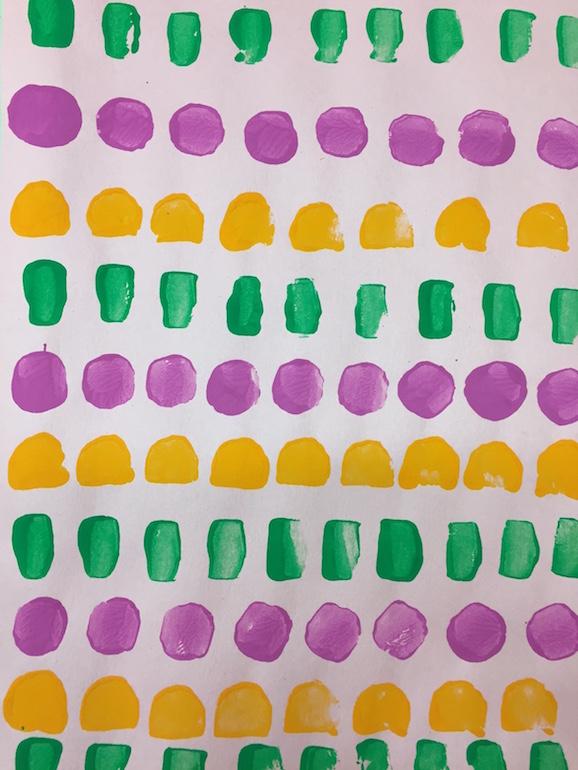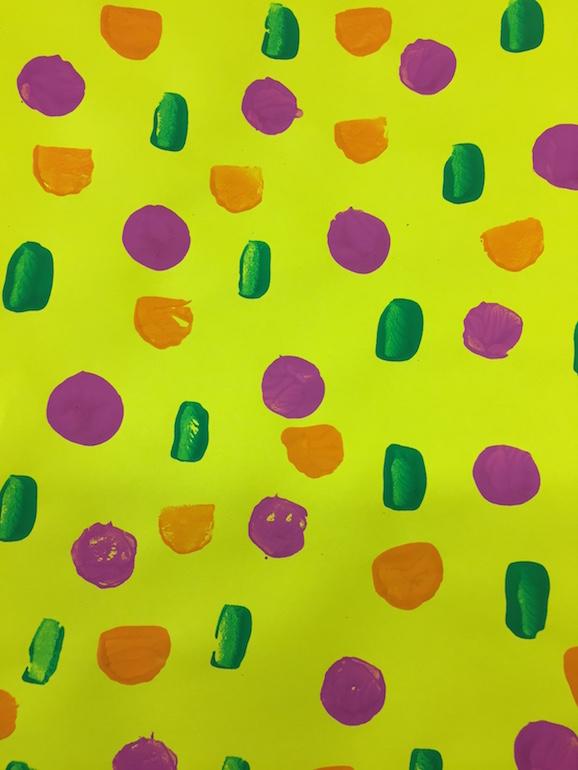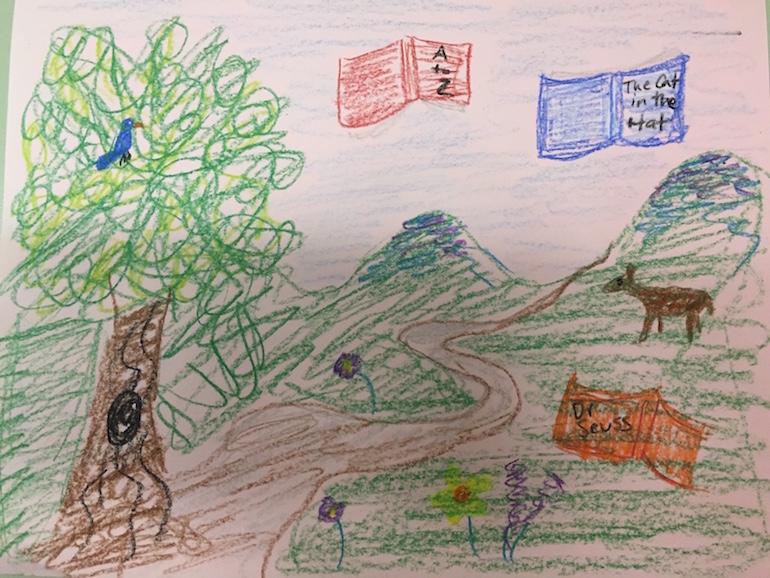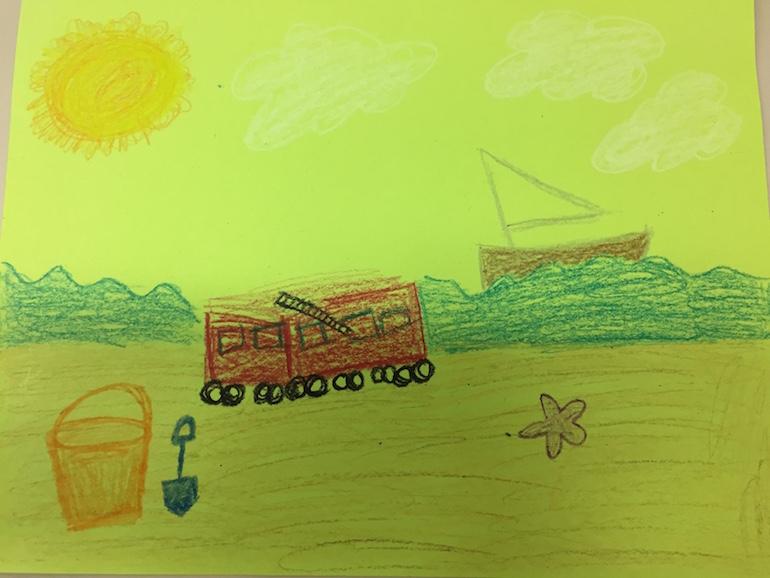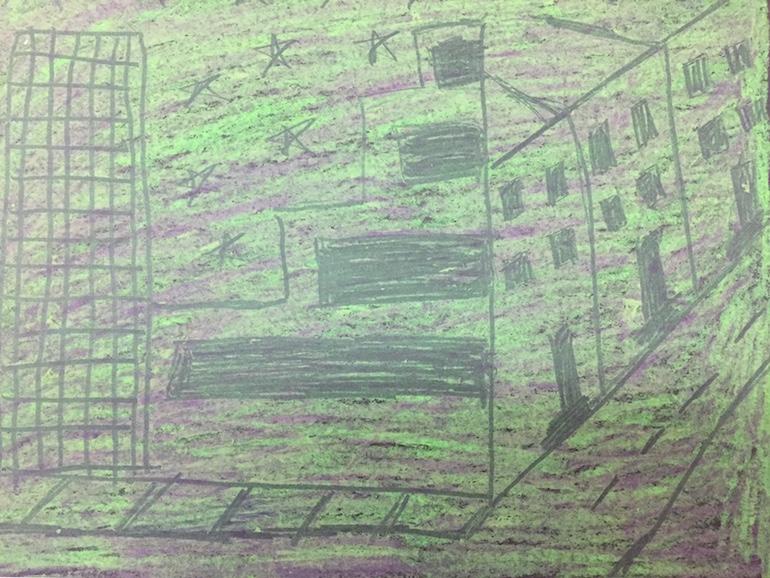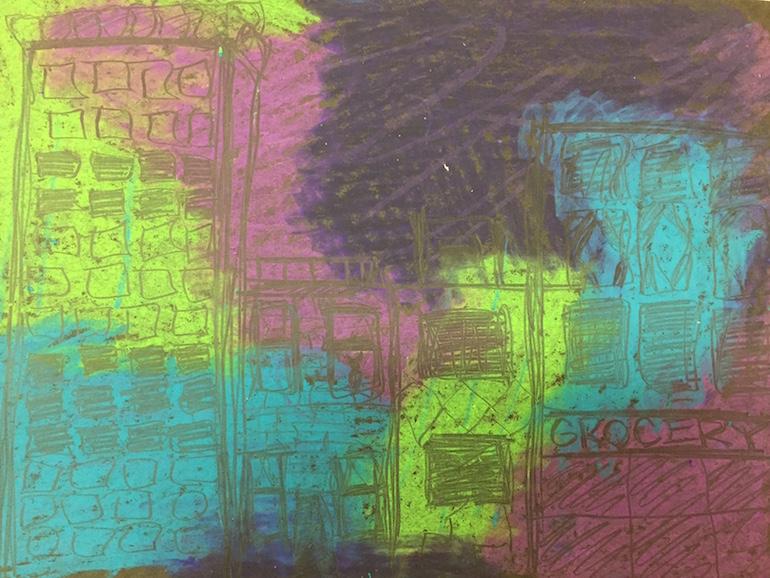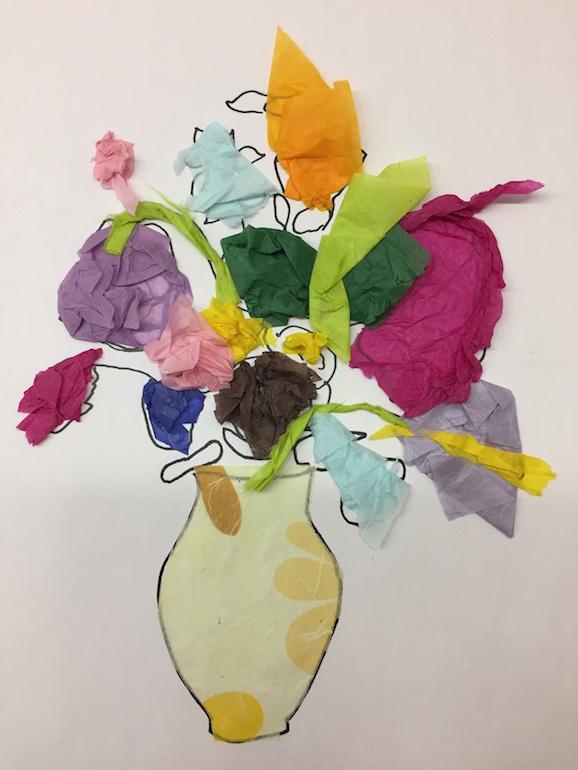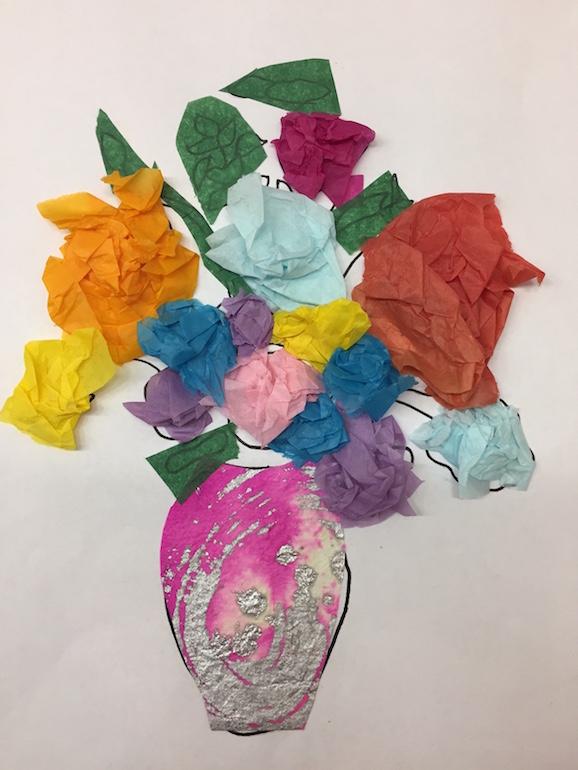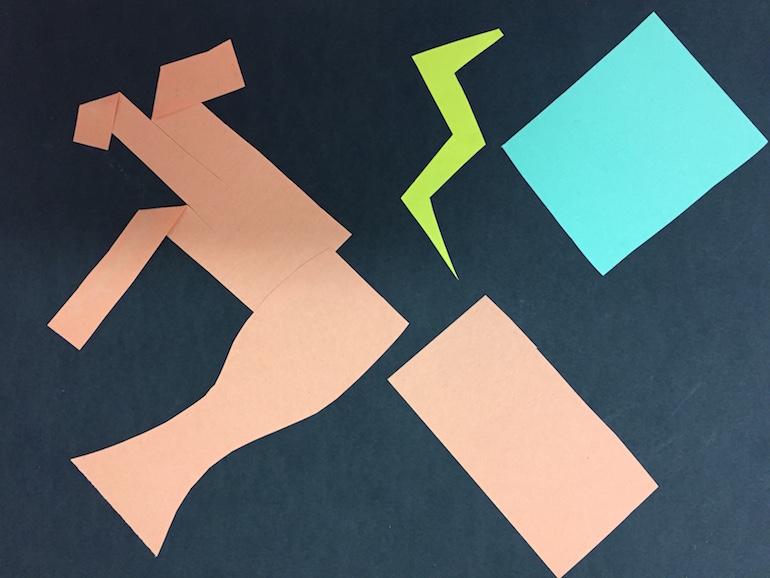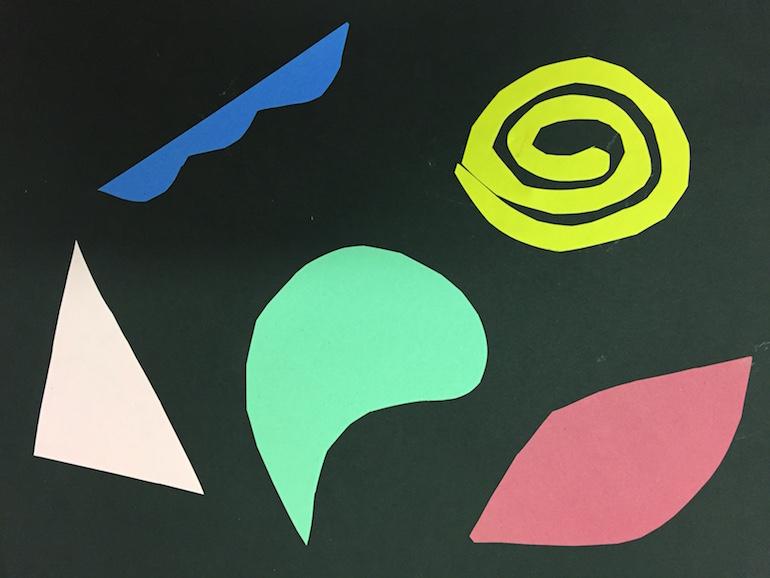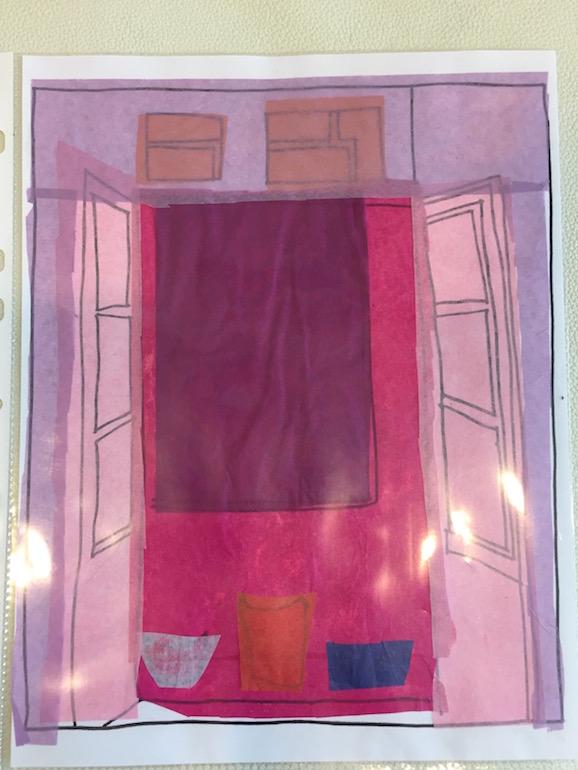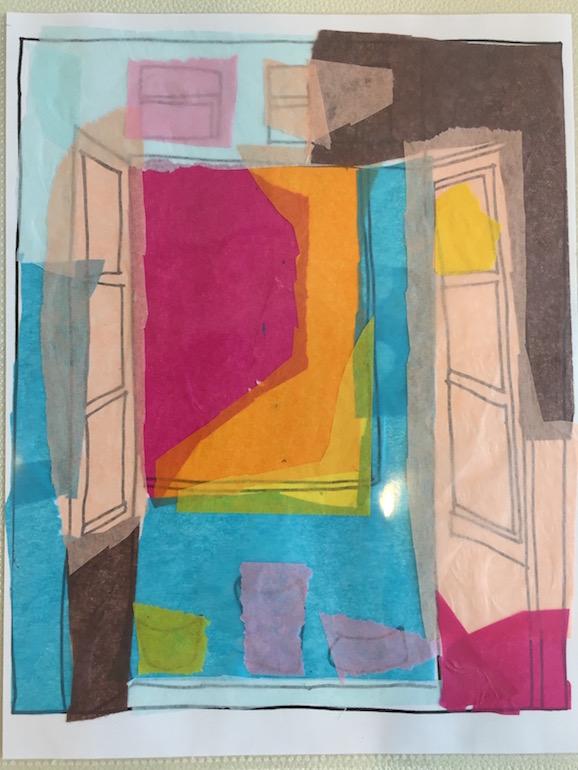Pre-K Lessons

Language
Use the following artworks and activities to inspire creativity in your students.
Stamp Patterns

Materials: foam blocks; paint; scissors
Time: 30 minutes
Look at the way repeated shapes and lines create patterns in these two artworks. Cut simple shapes into one-inch foam blocks, making stamps. Then have students dip their foam stamps into paint to create decorative, rhythmic patterns.
See inspiration and sample artworks:
Imagined Scenes

Materials: paper; crayons or colored pencils; coloring templates
Time: 20 minutes
Have students select an ordinary object from their classroom to draw or trace onto templates of surrealist landscapes. Then have them color the scene in and describe their chosen scene. Alternatively, the students could imagine their own fantastical settings, such as outer space, a far-away kingdom, or an island beach, in which they can include their classroom objects. Download coloring templates: Magritte's La Condition Humaine; Tanguy's The Look of Amber; Sage's A Finger on the Drum.
See inspiration and sample artworks:
Pretend Play

Materials: none
Time: 15 minutes
Using these images, have students pretend to be the figures in the paintings. What would they say if they could talk?
See inspiration artworks:
Scratch City

Materials: black construction paper; oil pastels; paper clips or small rulers
Time: 20 minutes
Inspired by the cityscapes of Jean Dubuffet, have students create their own scratch art. Have students choose two to three oil pastel colors to cover their black paper with. To cut shapes and buildings into the layers of pastel, students can use a paper clip or the corner of a small ruler. Students will scratch away pastel to create the buildings, streets, and cars for their cityscapes.
See sample artworks:
Tissue Paper Flowers

Materials: tissue paper; vase templates; glue sticks
Time: 20 minutes
Using paper, make your own flower arrangement. On the template of Redon's Large Vase with Flowers, have students glue crumpled pieces of tissue paper on the flower outlines. Students can color in or use patterned paper for the vase itself.
See sample artworks:
Shape Box

Materials: construction paper; glue sticks; box; scissors
Time: 20 minutes
Make a game of composing abstract compositions. Fill a box with varied geometric shapes cut from brightly colored construction paper. With eyes closed, have each student pick five shapes from the box to glue onto a piece of paper. Students can experiment with a few different arrangements before deciding on one to glue down.
See sample artworks:
Tissue Paper Window Scene

Materials: precut tissue paper squares; glue sticks; sheet protectors
Time: 30 minutes
Using precut squares of multicolored tissue paper, try constructing a window scene, changing colors to reflect how you feel about what you see. Have students use the template of Matisse's Open Window, Collioure and glue different pieces of tissue paper on the various parts of the scene. When done, have students put their papers inside a sheet protector to complete the "window" look.
See sample artworks:
Viewfinder

Materials: cardboard tubes; paper; coloring supplies
Time: 15 minutes
Have students use cardboard tubes as viewfinders to explore their world more closely. Select any scene (maybe an outdoor scene such as the one depicted above) and focus on a detail of an object, a face, or a setting through the viewfinder to be the subject of a drawing.
Download
Redon's Large Vase of Flowers coloring template
Matisse's Open Window, Collioure coloring template
Sage's The Finger on the Drum coloring template
Tanguy's A Look of Amber coloring template
Magritte's La Condition Humaine coloring template
Submit Student Work
Send images of your students' projects that follow these activities - email [email protected]




